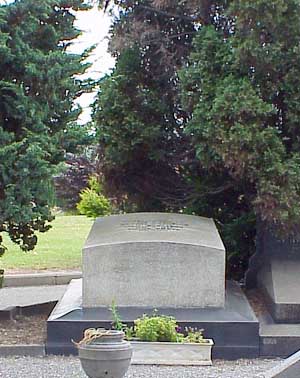Architect. He was a Belgian architect and designer, who was one of the founders of the Art Nouveau movement in the 1890s. He saw every detail, from banisters to stained glass to wave designed mosaic floors, ensuring a unified effect into the interior spaces of his buildings. He used soothing hues of green, orange, and yellow. Tassel House is one of his most recognized creations and credited as being the first Art Nouveau building. Other buildings in Brussels include the van Eetvelde Hotel, his own personal residence, L'Innovation Department Store, the Palais des Beaux-Arts, and his final work, the central railway station to name a few. During his career, he became an adaptable architect who could easily transition from Art Nouveau to other styles such as Art Deco as public tastes dictated. He studied architect at Université Libre de Bruxelles. Many of his buildings were destroyed during war or left abandoned in disrepair. Four of his creations are listed on UNESCO World Heritage List in 2000: the Hôtel Tassel, the Hôtel Solvay, the Hôtel van Eetvelde and the Horta House, which is currently the Horta Museum. During World War I when Belgium was a war zone, he was in London at the start and travel to the United States to lecture at various universities including Cornell, Harvard, MIT, Smith College, Wellesley College and Yale. In 1917, he was named Charles Eliot Norton Memorial Lecturer and Professor of Architecture at George Washington University. He returned home in January of 1919. He was also known for his furniture designs. As a divorcé, he married Julia Carlsson in 1908. In 1925, he was an architect of honor for the Belgian Pavilion at the International Exhibition of Modern Decorative and Industrial Arts in Paris. The exhibition gave the name of his latest designs as "Art Deco". In the same year, he became director of the Fine Arts section of the Belgian Royal Academy of Fine Arts.
Architect. He was a Belgian architect and designer, who was one of the founders of the Art Nouveau movement in the 1890s. He saw every detail, from banisters to stained glass to wave designed mosaic floors, ensuring a unified effect into the interior spaces of his buildings. He used soothing hues of green, orange, and yellow. Tassel House is one of his most recognized creations and credited as being the first Art Nouveau building. Other buildings in Brussels include the van Eetvelde Hotel, his own personal residence, L'Innovation Department Store, the Palais des Beaux-Arts, and his final work, the central railway station to name a few. During his career, he became an adaptable architect who could easily transition from Art Nouveau to other styles such as Art Deco as public tastes dictated. He studied architect at Université Libre de Bruxelles. Many of his buildings were destroyed during war or left abandoned in disrepair. Four of his creations are listed on UNESCO World Heritage List in 2000: the Hôtel Tassel, the Hôtel Solvay, the Hôtel van Eetvelde and the Horta House, which is currently the Horta Museum. During World War I when Belgium was a war zone, he was in London at the start and travel to the United States to lecture at various universities including Cornell, Harvard, MIT, Smith College, Wellesley College and Yale. In 1917, he was named Charles Eliot Norton Memorial Lecturer and Professor of Architecture at George Washington University. He returned home in January of 1919. He was also known for his furniture designs. As a divorcé, he married Julia Carlsson in 1908. In 1925, he was an architect of honor for the Belgian Pavilion at the International Exhibition of Modern Decorative and Industrial Arts in Paris. The exhibition gave the name of his latest designs as "Art Deco". In the same year, he became director of the Fine Arts section of the Belgian Royal Academy of Fine Arts.
Bio by: Linda Davis
Gravesite Details
Shares marker with family members
Family Members
Advertisement
See more Horta memorials in:
Records on Ancestry
Sponsored by Ancestry
Advertisement





